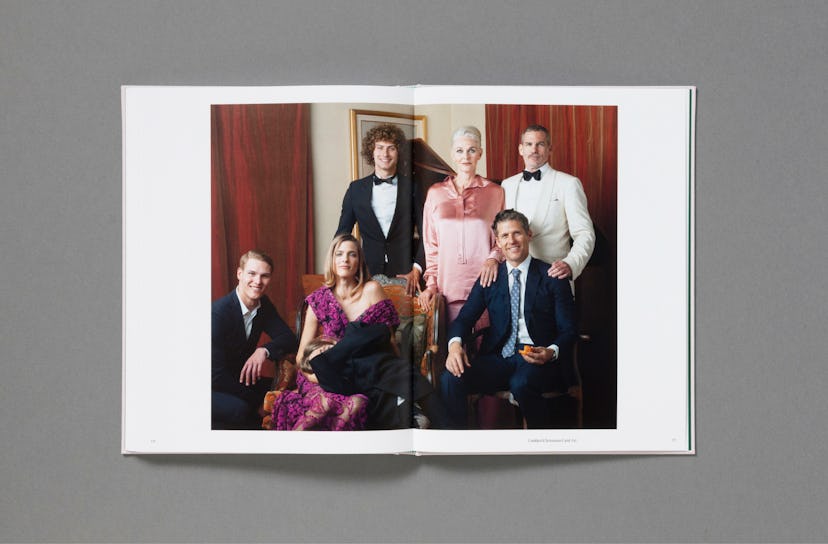Buck Ellison Critiques Systems of White Privilege in Living Trust
The photographer discusses his book, and how the Black Lives Matter movement has spurred meaningful conversations within his own family.

Flipping through this book, I read a lot of humor into these images—I find myself laughing at the subjects, not with them. Did you feel the same way making the pictures? How did you navigate the politics of respecting your subjects while also critiquing them?
I’m happy to hear you’re laughing. I see them as laughing at myself—I wouldn’t be able to make my critiques were I not raised in the world I’m examining. I’ve never wanted to point fingers at individuals. I do want to examine the manners, gestures, and behaviors that perpetuate inequality. But humor is very important to me, it’s one of the few cards I can play, politically speaking.
Were your subjects aware that you were creating a book critically examining white privilege?
Yes. When my casting director and I scout subjects, we show them my work, explain the project, sign releases, etc. The work takes me places that are extremely strange and uncomfortable, so I’m honored that these actors are willing to go there with me.
Photograph from Buck Ellison’s new book, Living Trust. Photograph courtesy of Loose Joints.
Photograph from Buck Ellison’s new book, Living Trust. Photograph courtesy of Loose Joints.
How did you go about casting/getting access to these different subjects?
I borrow from the model of a commercial photo shoot—sourcing actors, clothes, props, and locations.
Have you had a public viewing of this work yet? If so, did you experience any criticism from white people?
All of the photos in the book have been shown before. Criticism, no, but I’ve heard things about the work that were—how can I put this?—disappointing. But photographs are open-ended, everyone’s entitled to their own interpretation, and this is a strength of the medium.
Photograph from Buck Ellison’s new book, Living Trust. Photograph courtesy of Loose Joints.
At what point in your privileged upbringing did you realize you wanted to comment on it?
I was lucky to go to a progressive school where we talked about economic inequality and systemic racism. But there was this tension between the social mission of the school and capital required to attend it, which created funny situations—a Procter & Gamble heiress protesting animal cruelty, for example. As I’ve gotten older, I see echoes of this friction everywhere: the ethical stance of a university vs. how its endowment is invested, the civic mission of an art museum vs. its board members, and, of course, what my work “critiques” vs. who acquires it.
Has your work started a conversation about whiteness in your own family?
We’ve had some good conversations lately, but I’d credit the Black Lives Matter movement rather than my work for them.
Writers are always told to write what they know. I think more photographers should take this advice, which you have—they’d be more likely to say something informed, or say anything at all. Was making work about whiteness scary?
My work has always scared me, but I’ve taken that to mean I was onto something. As white people, we’re conditioned not to talk about race or class, but such polite discretion is its own privilege, a strategy to ignore the inequality all around us.
Was there a time in your youth when you were caught up in the culture of white privilege, or were you always critical of it?
Of course. I was born with white skin. I don’t think it’s possible to not benefit from white privilege, even as an anti-racist white person. We live in a country where our banks, our insurance companies, even employee management systems were designed to support chattel slavery. It’s deeply ingrained. I hope my work might help peel back a layer or two, but I’m still learning and messing up.
Photograph from Buck Ellison’s new book, Living Trust. Photograph courtesy of Loose Joints.
Learn more about Buck Ellison’s book via Loose Joints.
Related: Glen Luchford Relives 30 Years of Fashion Photography in New Exhibition